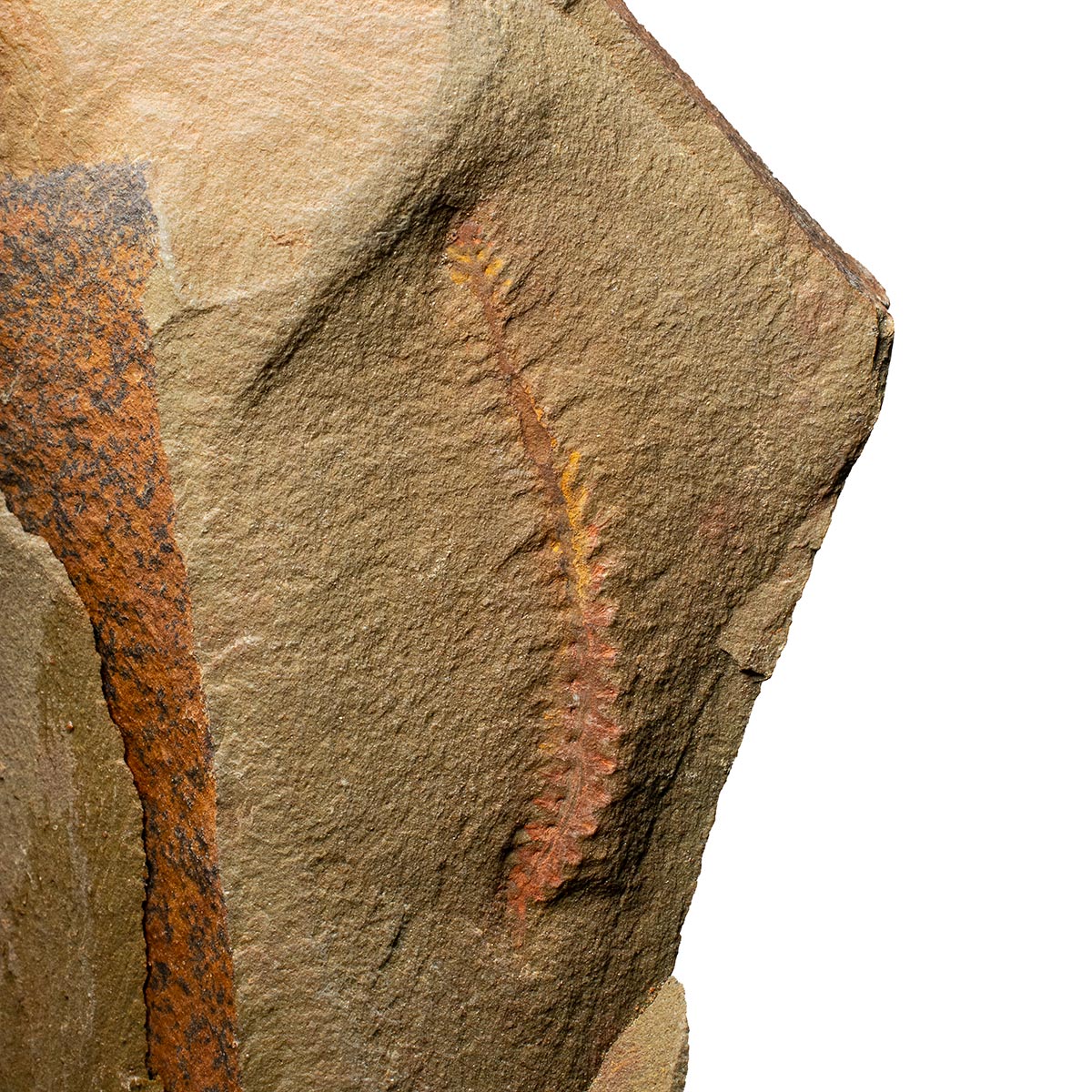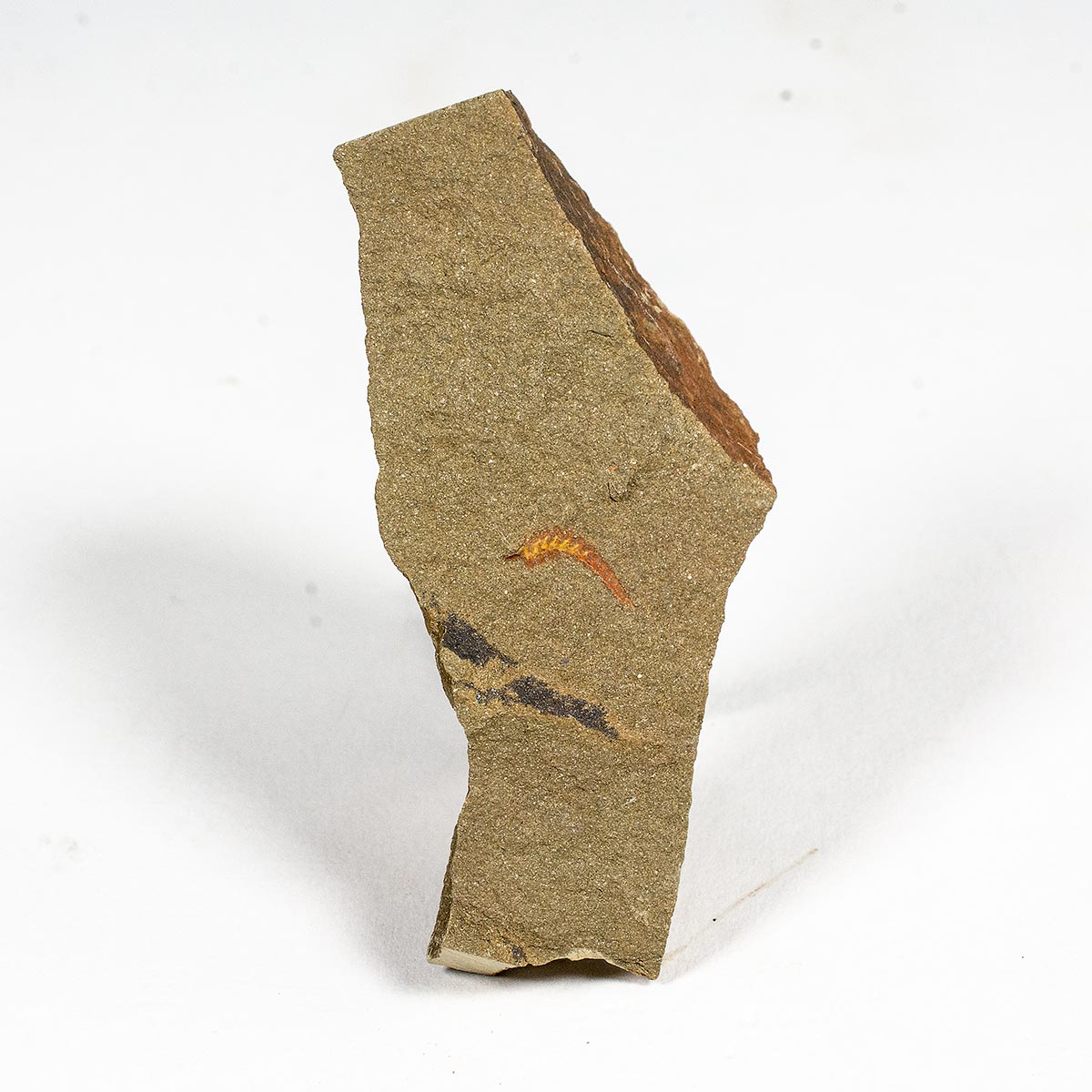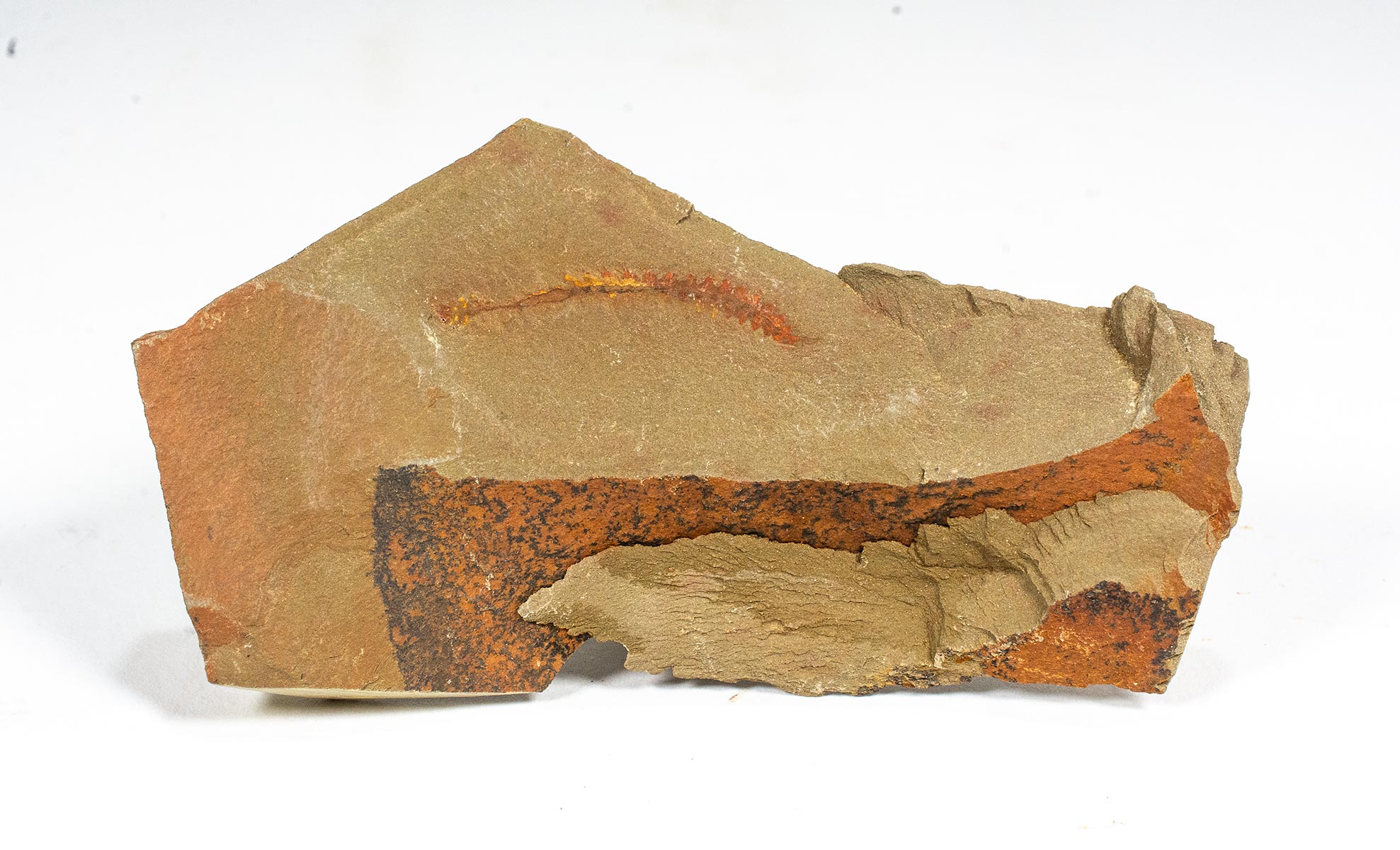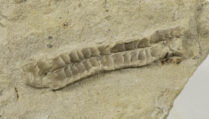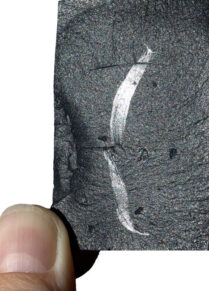Description
Polychaete worm
Early Ordovician (Arenigian)
Upper Fezouata Formation
Zagora, Draa Valley, Morocco
32mm polychaete worm on 83mm slab. Rare.
A polychaete is a type of annelid worm belonging to the class Polychaeta. These worms are primarily marine animals and are known for their segmented bodies, which often bear pairs of fleshy protrusions called parapodia. Each parapodium usually has many bristles or chaetae, which is why they are often referred to as “bristle worms.” Fossils of the entire animal are very rare and typically only found under conditions of extraordinary preservation in lagerstatte deposits.
Key features of polychaetes:
Segmentation: Their bodies are divided into numerous segments, each typically having a pair of parapodia.
Parapodia and Chaetae: The parapodia help in locomotion and sometimes respiration. The chaetae provide traction against the substrate.
Diverse Forms: Polychaetes are incredibly diverse, with over 10,000 species. They can vary significantly in size, shape, and lifestyle. Some are free-swimming, others burrow in the sediment, and some live inside tubes they construct from sand, mud, or secreted substances.
Habitat: Most polychaetes are marine, living in environments ranging from shallow coastal waters to deep-sea habitats.
Diet: Their feeding habits vary widely. Some are predators, others are scavengers, and many are filter feeders or detritivores.
Reproduction: Polychaetes can reproduce sexually, and many species have separate sexes. Some species are also capable of asexual reproduction through fragmentation.
Polychaetes play essential roles in marine ecosystems, such as contributing to the breakdown of organic material and serving as a food source for other marine animals.

